AARP Hearing Center

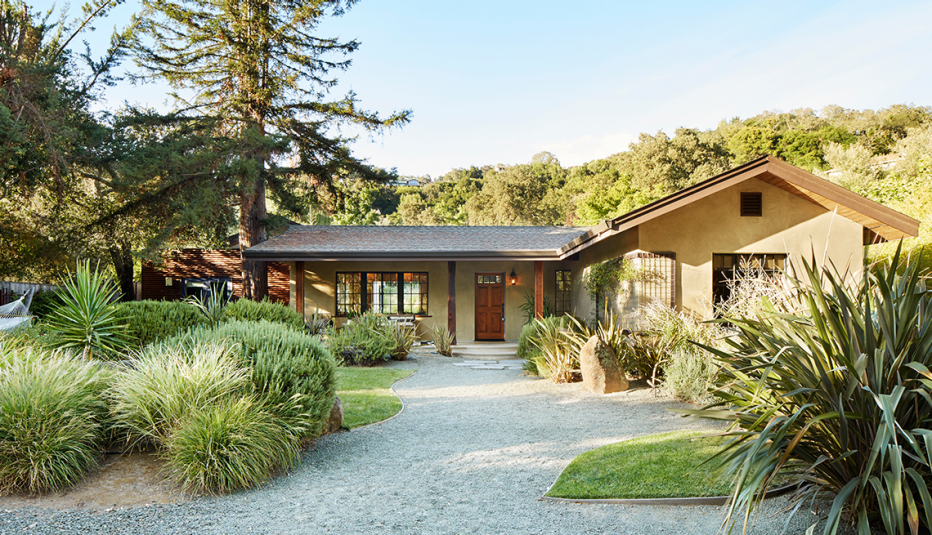
At first glance, a yard might look like grass, a few trees, some flowers and a smattering of rocks or mulch. If you look closer, however — at the neighbor tending her garden, the early bird mowing his lawn, the kids playing soccer or the home chef manning the grill — you’ll realize that a yard is never just a yard. At its best, it’s a sanctuary.
We want to help you cultivate your own personal sanctuary, so if you have landscaping projects on your to-do list, we hope these tips will help you to create an outdoor space you'll savor for years to come.

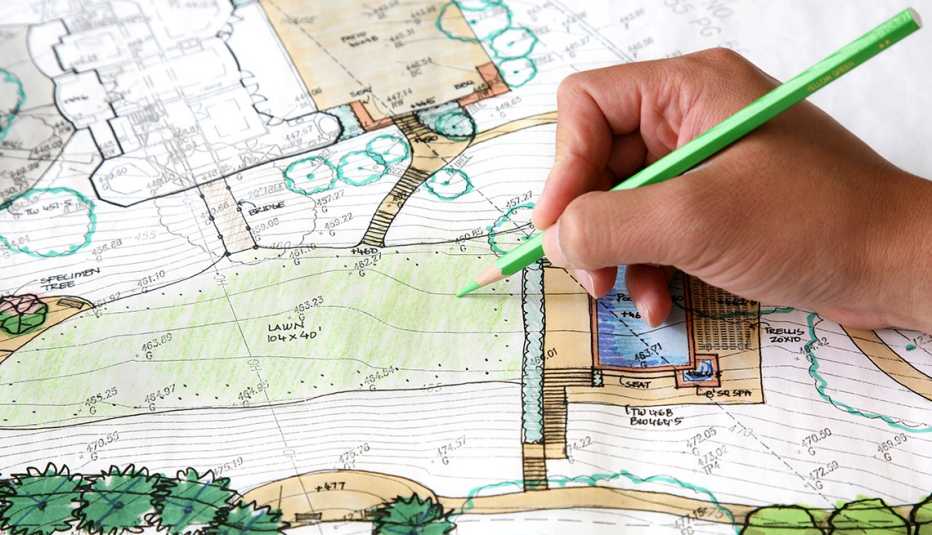
GETTING STARTED
1. Take a walk or drive
Instead of going to Google to research landscape ideas, begin your journey in your neighborhood, suggests John Thomas, founder of the gardening blog BackyardGardenGeek.com. “When I did a $20,000 landscape renovation project a few years back, the first thing I did was I started driving around my neighborhood, and then I drove around the surrounding neighborhoods when I was taking my kids to school. If I saw somebody who did something really interesting with a property, I stopped, I got out of my car and I took photos,” Thomas says. “When you hop on Google, a lot of times you don’t know exactly where these photos are coming from. Plants that do really well in the Dallas area may not do well at all if you’re in South Dakota or Oregon or Florida. When you drive around your neighborhood, you’re seeing people who are growing things in your area that are going to work.”
2. Use apps to identify plants
While you are out and about scouting for plants, if you need help identifying plants you are interested in, apps — such as Pl@ntNet, iNaturalist, PictureThis, FlowerChecker, LeafSnap and Plant.id — can help. Just snap a photo of the plant on your phone and share it to the app.
3. Visit your local botanic garden
Botanic gardens, conservatories and arboretums can be wellsprings of inspiration and education for homeowners, says Dave Halvax, director of horticulture at Fernwood Botanical Garden in Niles, Michigan. “Local botanic gardens can be great resources for questions about home landscape problems, including pest management, diseases, plant choices or their locations, or as places to obtain plant material,” explains Halvax, who says your local botanic garden shares your geography and can therefore be a showcase for plants that grow well in your region and climate. In fact, specimens at botanic gardens typically have labels that help you identify their scientific and common names, the date they were planted and other pertinent information that can be useful for research. And because plants at botanic gardens are planted in collections, they offer a unique opportunity to learn which plants grow well together in close proximity. Finally, many botanic gardens offer plant sales where you can purchase plants for your gardens, as well as hands-on events where you can learn about plants and interact with experts, including garden walks and horticulture classes.
4. Plan before you plant
You should plan your project on paper before you put a shovel in the ground. You can outsource to services such as Yardzen, which provides custom landscape designs to clients based on site and inspiration photos that they uploaded via the web. The iScape app allows you to plan your space and costs $29.99 a month or $299 for a year. Tilly Design offers remote packages for backyards starting at $629. Thomas prefers using graph paper, where each square represents 1 foot, for instance. “It doesn’t have to be super accurate, but it gives you a bird’s-eye view of your yard so you can start imagining what your yard will look like and where things will go,” he says. If you prefer sitting down with a landscaper, call around to get at least three estimates and talk over your ideas.
5. Begin with the end in mind
If it’s done well, your landscaping can add value to your home, according to Baron Christopher Hanson, a real estate agent with Coldwell Banker Realty in South Florida. When planning, consider what your yard might look like if you sell your home.
“Any landscape design that adds functionality, creates space, improves privacy or reduces maintenance headaches beyond visual or colorful enjoyment alone will add value to your residential property,” explains Hanson, who says bad landscaping can hurt home values as easily as good landscaping can help them. “Overly garish vegetation that is laborious to maintain or clean up after can be an expensive detractor of value.”
In the worst cases, haphazard landscaping decisions could even be dangerous. “Poorly or wrongly planted trees will eventually grow both above and below ground to the potential detriment of your home’s actual structure, plumbing, irrigation and paving,” Hanson says.
6. Root your design in function
When you’re starting a landscaping project, plan your space according to how you’ll use it, suggests Kevin Lenhart, design director and landscape architect at Yardzen. “The most successful designs are rooted in function,” he says. “I like to begin thinking about a new layout of a yard by listing out the functions I hope to achieve within the space, and starting to play around with where each function may be best situated.” If you’re a foodie, consider an outdoor kitchen near the house for easy access, points out Janet Loughrey, a contributor to GardenDesign.com. Or if you’re an avid reader, you might wish to create a reading nook farther away from the house where it’s quiet.
7. Beautify on a budget
Though landscaping costs can vary dramatically from site to site and from region to region, a good starting point is a budget equaling about 10 percent of your home’s value for a full-yard landscape, Lenhart says. “Make a list of the must-have and nice-to-have elements, and be ready to scale down your project if some elements prove to be cost-prohibitive,” Lenhart advises. “Leave some padding and be flexible. Whatever budget you arrive at, market forces, site conditions and unexpected build contingencies can all be part of the process.” And remember, you don’t have to do everything all at once. “If you have big ideas but you don’t have enough money to do them all, you can break it down into smaller projects … and just do it in phases,” Loughrey says.
8. Price out hardscaping
Hardscaping — patios, walkways, sitting walls, retaining walls, water features, firepits, landscape lighting, grill surrounds and pergolas — can elevate your outdoor space in an incredible way but are typically the biggest expense. If you’re on a budget, gravel is an affordable option. “Aggregates like gravel and decomposed granite are delightfully crunchy when you step on them, and that evokes a rustic feel that can be very useful for setting a casual tone in a design,” Lenhart says. “Though if you have kids or dogs, you’ll need to tolerate these materials getting kicked around a bit.” Solid paving requires less maintenance and is more stable underfoot but can cost significantly more. “Concrete slabs, while cheapest among paving options, can feel cold and uninviting, especially when they get large,” continues Lenhart, who prefers stone pavers. “Stone paving tends to cost more, but it’s incredibly durable and has beautiful natural color variation. Using regional stone can reduce costs — and carbon footprint — by cutting out extensive shipping, but it also can help build a visual connection between your yard and the surrounding natural landscape.” If you’re just getting started in updating your outdoor space, it’s probably best to test out cheaper alternatives to built-in hardscaping.
9. Consider hiring a pro
“Some things are fine to DIY, especially if you’re experienced with landscape installation and maintenance. At the same time, there are real benefits to hiring professionals,” explains Lenhart, who says pros typically get cheaper rates on plants and building materials and often warranty their work in case plants fail to survive the first year or two of installation. Plus, they tend to be much more efficient. “Time is money, and professional landscape contractors will almost always get a landscape installed more quickly than a DIYer. If you factor in the cost of your time, it quite often ends up being a cheaper proposition to hire a professional.” The more elaborate the project — grading, drainage or electricity — the more likely it is you’ll need a professional, Loughrey says.

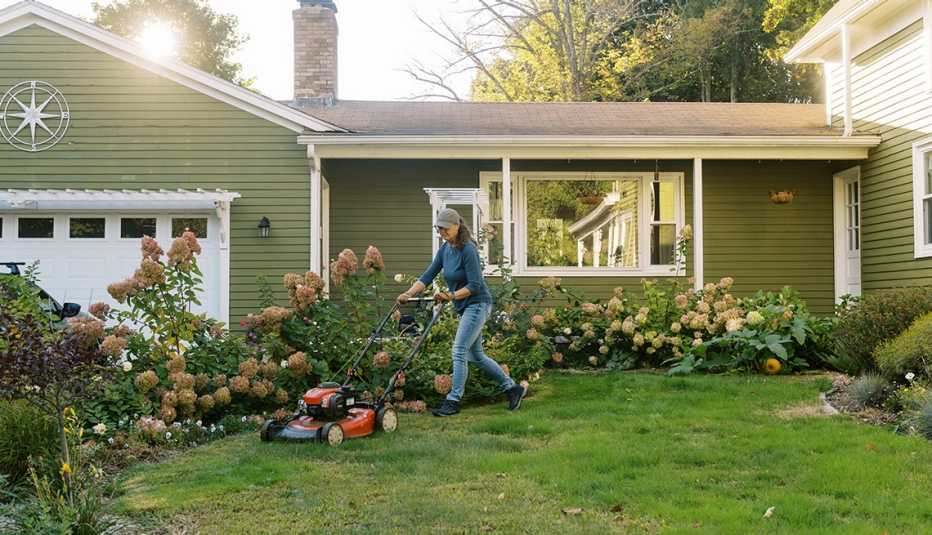
BUILD A FOUNDATION WITH TREES AND PLANTS
10. Choose the right plants for the right place
When choosing plants and trees for your landscape, you should consider whether you want more or less privacy, color, shade, maintenance and wildlife, says David Angelov, founder, CEO and master gardener at PlantParenthood, in Swampscott, Massachusetts. All of those things will dictate your choice of plantings. Most important is knowing your plant hardiness zone, which the U.S. Department of Agriculture (USDA) describes as “the standard by which gardeners and growers can determine which plants are most likely to thrive at a location.” Your zone dictates what will survive in the winters, explains Angelov, who says your local garden center can help you determine your zone and what grows best in it. Look up yours at planthardiness.ars.usda.gov.
11. Plant for all seasons
Maximize your landscape by choosing plants and trees that will give year-round enjoyment, Lenhart suggests. “Strong planting designs capitalize on seasonal change to pass the spotlight from one part of the yard to another throughout the year,” he says. “Colorful blooms can begin in early spring with early bulbs and bare-branch blossoms, and move from one species to another all the way into late fall and early winter. Evergreens maintain interest through the heart of winter, but so can deciduous plants with sculptural forms and trees with attractive bark or winter fruit.”
12. Be strategic about trees
Trees can serve important functions in your yard if you plant the right species in the right spots, according to Joshua Malik, president of Joshua Tree Experts in Pennsylvania’s Lehigh Valley. Because big winds tend to come from the west and northwest, he says, large evergreens on that side of your property can serve as windbreakers. Likewise, the sun is typically hottest on the south and southwest side of your home; planting large shade trees on that side of your property can keep your house cool in the afternoon and evening. Small flowering trees are good for the front of the house because they add curb appeal.
13. Group plantings for greater impact
If you want a splash of color, planting a few ornamentals will do the trick. According to Angelov, however, more is better. “I like to group a lot of similar plants together. They make the best impact when they’re in a group of 50 versus one,” he says. “I like to work in odd numbers — it’s calming to the eye and more natural-looking — but most of the time I’m adding 20 to 40 of something in a single area, which adds a huge impact. It’s as if you’re in a field in nature.”
14. Cultivate privacy
Unless there’s a good reason not to — to keep a pet contained, for example — consider using natural edges and borders instead of fencing. “I’ve found that using hedges, especially evergreen ones, is a great way to get the privacy I want without having to completely cut off the surrounds like a fence would,” says master gardener Jen Stark, founder of Happy DIY Home, a gardening and home improvement blog. “I love using boxwood for hedges. They come in a huge range of sizes, and you can easily trim and prune them into a solid fence that stays neat and green all year round.” Be sure to plant any shrubs or bushes far enough away from sidewalks and paths so in a few years you aren’t bemoaning the location.
15. Add organic mulch
When it’s used in plant and flower beds, just a couple of inches of mulch can keep the soil cool and moist while preventing weeds. Organic mulch includes any material that was once alive, so grass clippings, wood chips, straw, hay, bark mulch and composting material all work. “If you’re more concerned about moisture retention and soil nutrients, go with organic mulch. Wood chips or bark, in particular, help trap water closer to the soil and keep the plant roots cool in hotter temperatures,” Stark says.
16. Or consider inorganic mulch
If you want something that doesn’t break down, consider inorganic mulch, which includes pea gravel, rubber chips and river rocks. They don’t add any nutrients to the soil, but they can add eye-catching layers of color and texture, Stark says. Inorganic will typically cost you more per bag than organic.
17. Choose a complementary color
Basic mulch colors include brown, black or red. “Choose a mulch color that doesn’t work against your flowers’ colors or the color of your house. Red mulch contrasts nicely with white flowers without taking away from them,” Stark says.
18. Think twice about mulch spray and glue
You can use mulch spray to refresh old mulch, and mulch glue to keep loose mulch in place. But Stark isn’t a fan of either. “The spray doesn’t do much by refreshing the color, and you should be adding new mulch each season anyway as the old breaks down, so it’s an unnecessary expense. If you choose to use it, make sure you have a nontoxic choice that won’t harm your plants,” she says. “I’m also not a big advocate of mulch glue. If you keep the mulch watered and have a border like stones around it, you shouldn’t need to glue it into place to keep it from blowing away. If you do use it, have a light hand when you apply it. You don’t want to create a thick matte of mulch that prevents water or nutrients from coming through to reach the plant roots.”

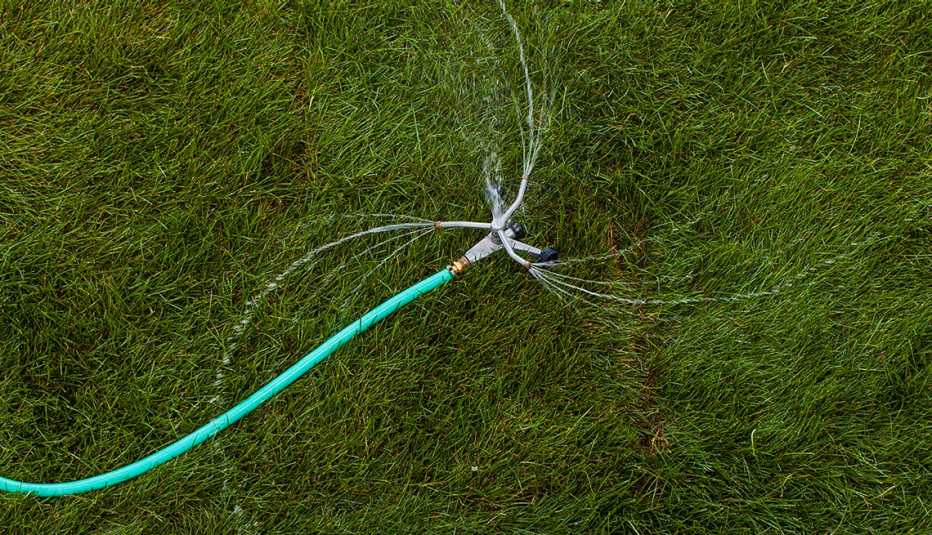
LOVE YOUR LAWN
19. Choose the right grass
A lush, healthy lawn starts with the best grass, according to Malik. “Selecting a grass species for your certain region that is disease-resistant and more tolerant of drought is very, very important to consider,” he says. With new lawns, in particular, annual aeration and seeding are crucial, as is ample water — about an inch of water a week from either rain or irrigation.
20. For speed, use sod instead of seed
Grass seed can spend months taking root and filling in. And if people or pets walk on it before it’s well established? Forget about it. If you want a lush-looking lawn that you can use quickly, opt for installing sod instead of seed, Thomas says. Check your garden centers for sod deals and be prepared to pay extra for the convenience.
21. Prune your trees
Like any other plant, grass needs sunlight. If it’s not getting enough, consider pruning adjacent trees. “You might need to thin the trees so they can allow filtered light to get to the subfloor of the lawn to keep it healthy and growing properly,” Malik says. “You might also have to raise low limbs up to an 8-, 10- or 12-foot height to allow air and sunlight to get in under there.” Having a professional prune taller trees is recommended — and they can let you know if any big branches should be removed so they don’t fall on your home or vehicles.

































































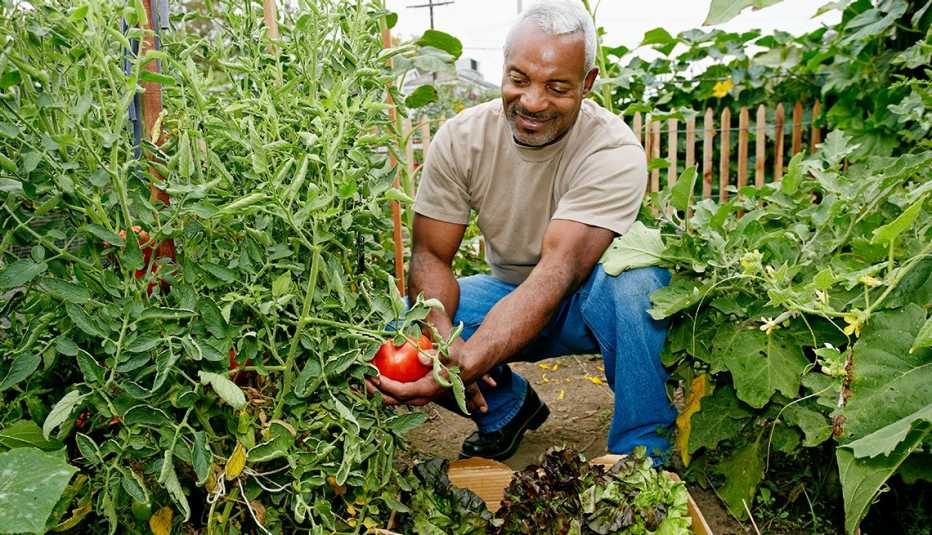
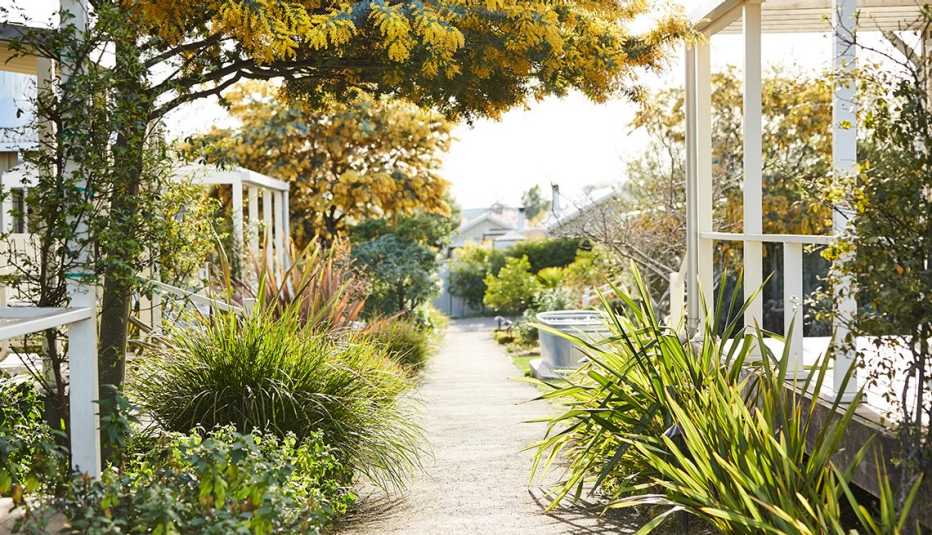
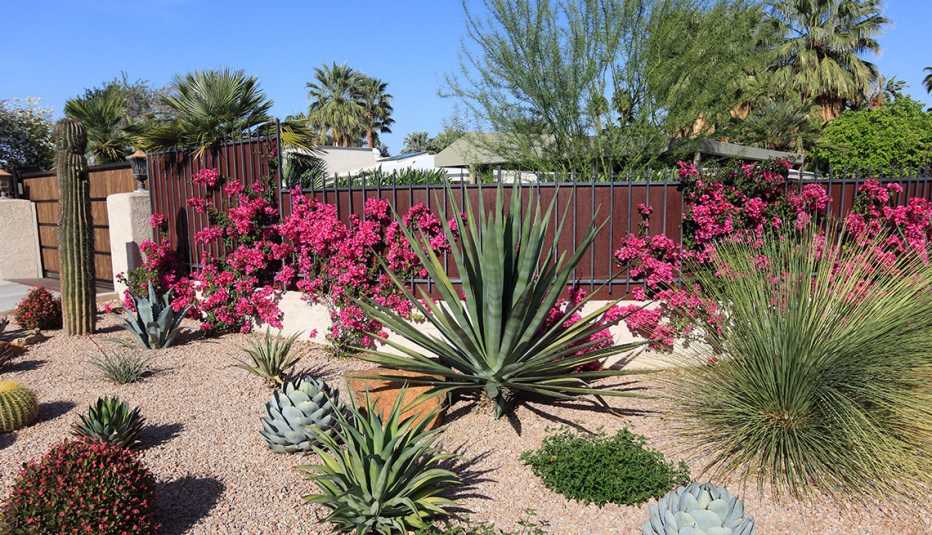
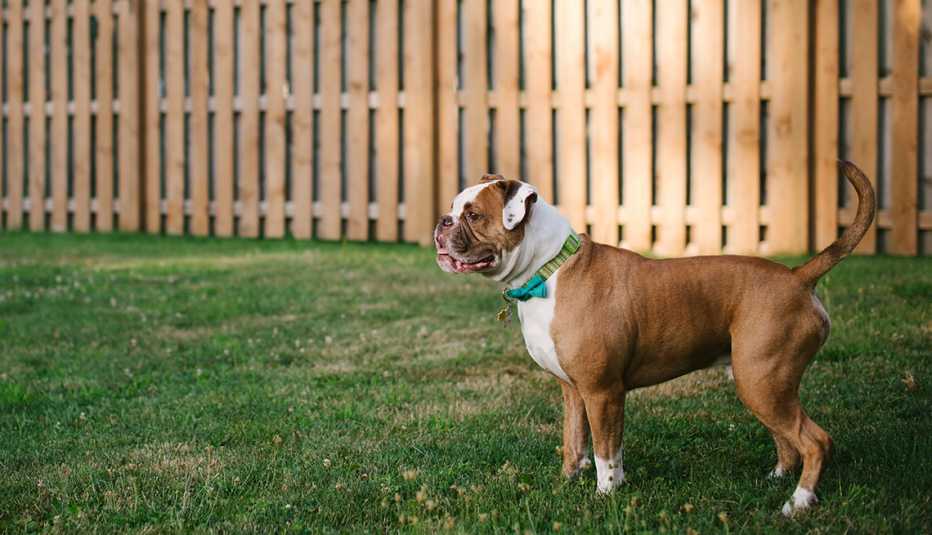
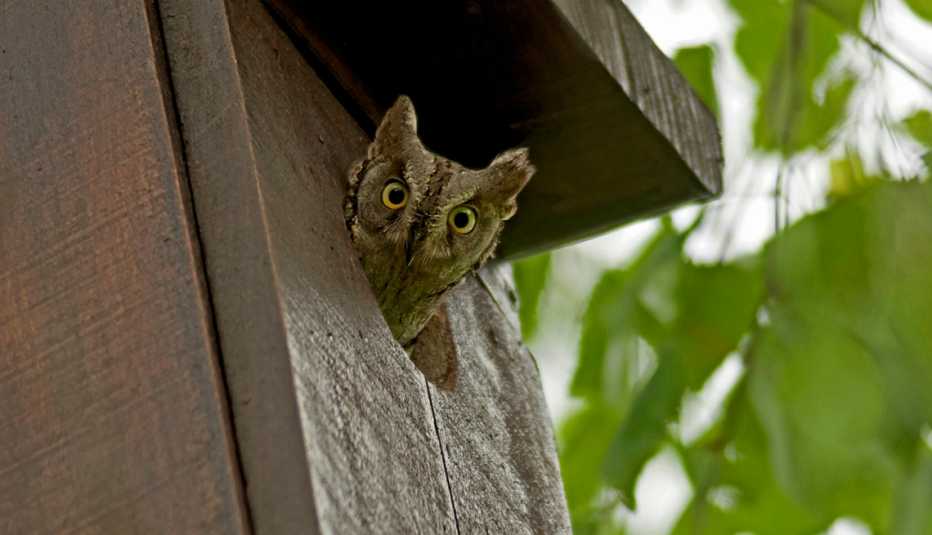
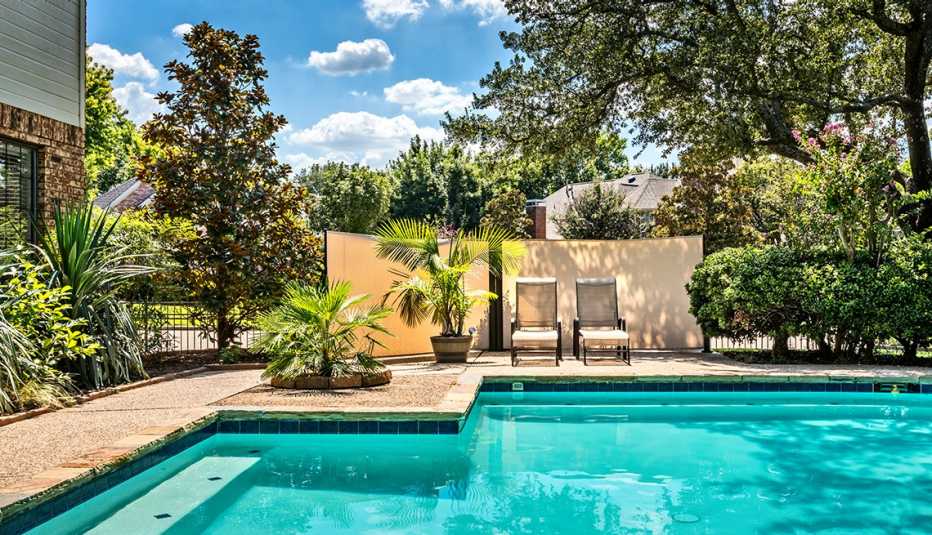
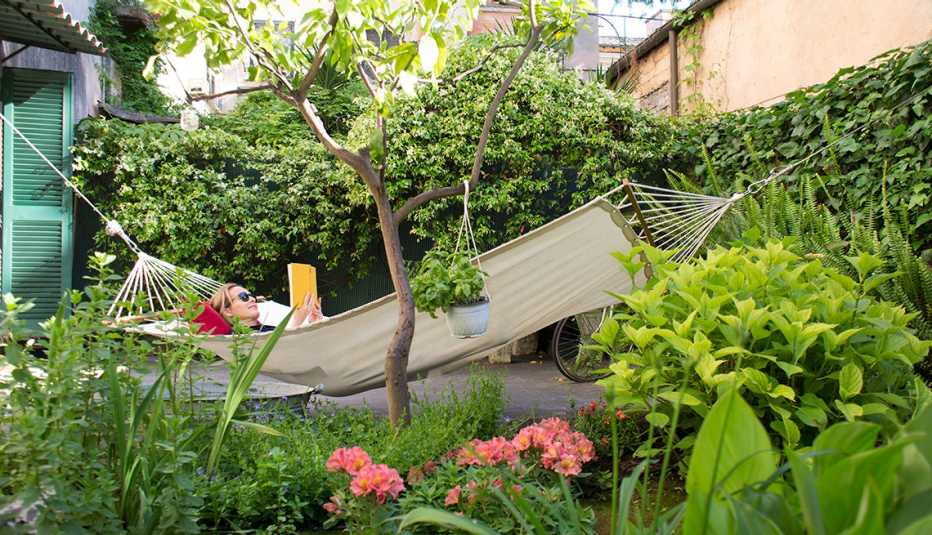


More AARP Smart Guides
Find the Best Vacation Rental
28 tips on planning — and enjoying — time away
Efficiently Clean Your Home
Room by room, now’s the time to tackle your ambitious cleaning to-do list
Manage Seasonal Allergies
Achoo! How to understand and treat your symptoms
More AARP Members Only Access
Enjoy special content just for AARP members, including full-length films and books, AARP Smart Guides, celebrity Q&As, quizzes, tutorials and classes